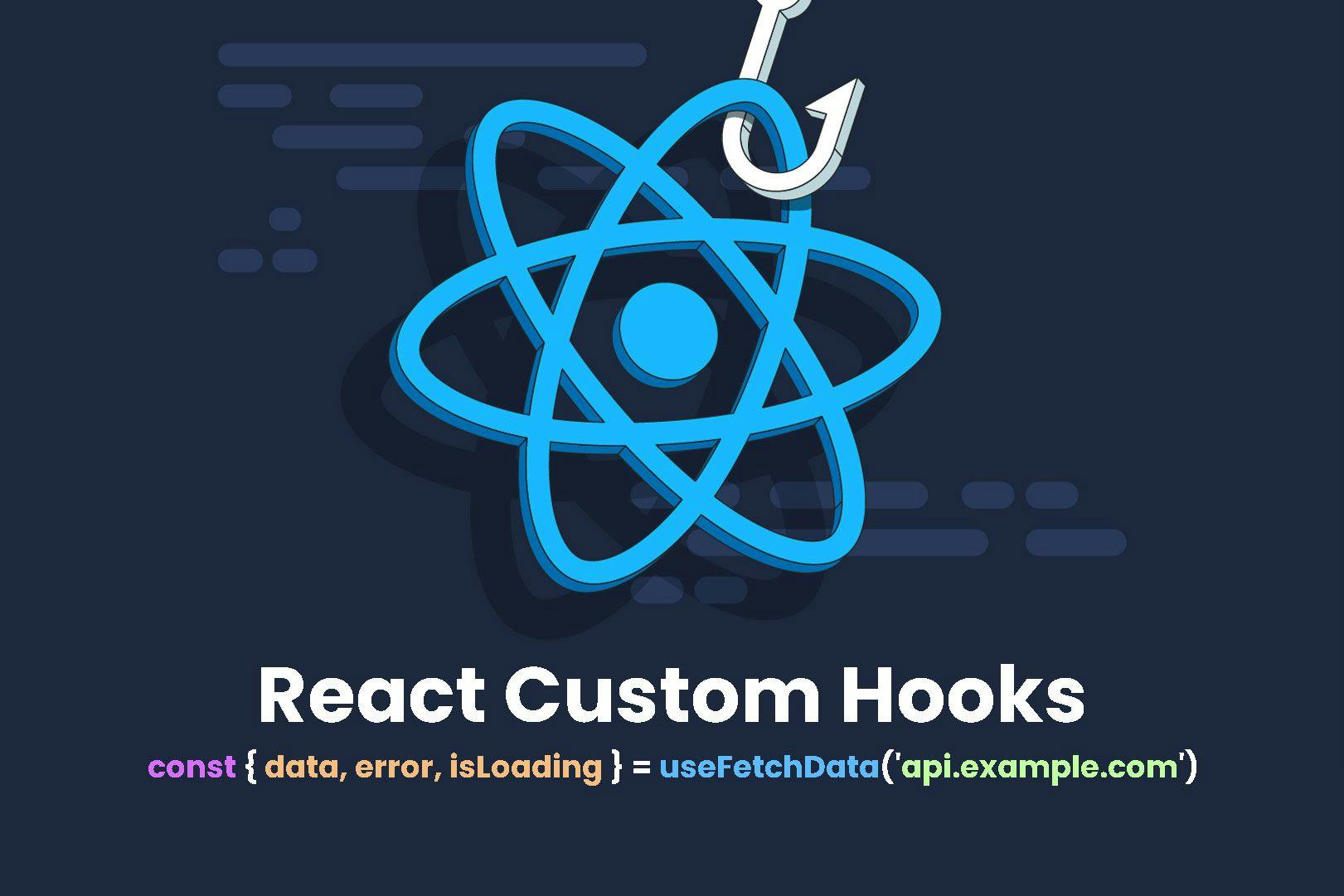In React development, custom hooks empower you to extract reusable functionalities, promoting code organization, maintainability, and reducing redundancy. This article delves into the concept of custom hooks, their benefits, creation process, and explores intricate examples to solidify your understanding.
Understanding Custom Hooks
- Function-Based Reusability: Custom hooks are essentially functions that encapsulate stateful logic, side effects, and computations that can be reused across various components in your React application. They adhere to the convention of starting their names with use (e.g., useFetch, useForm).
- Isolation and State Management: Each invocation of a custom hook operates in isolation. The state and effects managed within a hook are unique to the component using it. This segregation prevents unintended side effects and simplifies reasoning about component behavior.
Benefits of Custom Hooks
- Improved Code Organization: By extracting common logic into custom hooks, your component code becomes more concise, readable, and easier to maintain.
- Reduced Redundancy: Eliminate the need to duplicate identical logic in multiple components.
- Enhanced Reusability: Share well-defined functionalities across your application, promoting a modular architecture.
- Clearer Separation of Concerns: Separate data fetching, form handling, subscriptions, and other complex logic from your presentational components.
Creating Custom Hooks
- Extract Reusable Logic: Identify a block of code containing stateful logic or side effects that's used in multiple components.
- Create a New Function: Encapsulate the extracted logic within a new function named with the use prefix (e.g., useFetchData).
- Utilize React Hooks: Employ built-in hooks like useState and useEffect within your custom hook to manage state and side effects.
- Return Values: Return the necessary data, such as state variables or functions, from your custom hook to make them accessible to the component using it.
Complex Examples with Explanations
Example 1: useFetchData Hook for Data Fetching
import { useState, useEffect } from 'react';
function useFetchData(url) {
const [data, setData] = useState(null);
const [error, setError] = useState(null);
const [isLoading, setIsLoading] = useState(false);
useEffect(() => {
const fetchData = async () => {
setIsLoading(true);
try {
const response = await fetch(url);
const fetchedData = await response.json();
setData(fetchedData);
} catch (error) {
setError(error);
} finally {
setIsLoading(false);
}
};
fetchData();
}, [url]); // Dependency array ensures refetching on URL change
return { data, error, isLoading };
}
export default useFetchData;
Explanation:
- This useFetchData hook encapsulates logic for fetching data from a provided URL.
- It manages the following state variables:
- data: Stores the fetched data (initially null).
- error: Holds any errors encountered during fetching (initially null).
- isLoading: Indicates whether the data is being fetched (initially false).
- The useEffect hook triggers the data fetching process on initial render and whenever the url dependency changes.
- The asynchronous fetchData function handles the fetch operation, updating data, error, and isLoading accordingly.
Using the useFetchData Hook:
import React from 'react';
import useFetchData from './useFetchData';
function MyComponent() {
const { data, error, isLoading } = useFetchData('https://api.example.com/data');
if (isLoading) {
return <p>Loading data...</p>;
}
if (error) {
return <p>Error fetching data: {error.message}</p>;
}
return (
<div>
<h1>Fetched Data</h1>
<pre>{JSON.stringify(data, null, 2)}</pre>
</div>
);
}
Explanation:
- The MyComponent imports and uses the useFetchData hook, passing the data URL as an argument.
- It displays a loading message while data is being fetched, an error message if fetching fails, and the fetched data in a formatted manner once successful.
Example 2: useForm Hook for Form Handling
import { useState } from 'react';
function useForm(initialValues = {}) {
const [values, setValues] = useState(initialValues);
const handleChange = (event) => {
setValues({
...values,
[event.target.name]: event.target.value,
});
};
return { values, handleChange };
}
export default useForm;
Explanation:
- This useForm hook simplifies form management within a component.
- It accepts an optional initialValues object to define the initial state of the form fields.
- It utilizes the useState hook to manage the form's values (values) as an object.
- The handleChange function is a form field change handler, updating the values state using the spread operator (...values) to preserve existing values while modifying the targeted field.
Using the useForm Hook:
import React from 'react';
import useForm from './useForm';
function MyFormComponent() {
const { values, handleChange } = useForm({ name: '', email: '' });
const handleSubmit = (event) => {
event.preventDefault();
// Form submission logic here, using the `values` object
};
return (
<form onSubmit={handleSubmit}>
<label>
Name:
<input type="text" name="name" value={values.name} onChange={handleChange} />
</label>
<label>
Email:
<input type="email" name="email" value={values.email} onChange={handleChange} />
</label>
<button type="submit">Submit</button>
</form>
);
}
Explanation:
- The MyFormComponent imports and utilizes the useForm hook.
- It receives the values object (containing form field values) and the handleChange function from the hook.
- The form leverages these to manage input values and updates.
Additional Considerations:
- Custom hooks can leverage other built-in React hooks like useContext or even integrate with third-party libraries to manage complex interactions.
- Remember to test your custom hooks thoroughly to ensure they function as expected across different scenarios.
Related Blogs
- TypeScript with React: Benefits and Best Practices
This blog will dive into integrating TypeScript with React, covering the advantages of static typing, improving developer experience, and reducing bugs. It will also focus on type safety in props, state, and hooks within React applications, as well as common challenges and how to overcome them. - What's New in React 19: Features and Enhancements
A comprehensive overview of the latest features and changes introduced in React 19 (or any upcoming major version), including performance improvements, new hooks, and updates to existing features. This blog will highlight what developers need to know to migrate from previous versions. - React Hooks: A Deep Dive into useState, useEffect, and Beyond
This blog would focus on how React hooks revolutionized functional components by allowing you to manage state, side effects, and more. It would provide an in-depth explanation of useState, useEffect, and advanced hooks like useContext, useReducer, and useMemo, with practical examples. - State Management in React: Comparing Context API, Redux, and Zustand
This blog will explore different state management approaches in React applications, comparing the Context API, Redux, and Recoil. It will cover the pros and cons of each, and help readers choose the best option for their project based on complexity, performance, and ease of use. - High-Order Components and Render Props: A Comparison and Use Cases
A detailed explanation of high-order components (HOCs) and render props in React, including how they both enable code reuse and component composition. This blog will compare the two patterns, show how they work in practice, and offer examples of when to use one over the other for optimal code organization.
Conclusion
By effectively employing custom hooks, you can streamline your React development process, create more maintainable codebases, and promote better component reusability.
Devin AI: What is devin ai ? World's First AI Software Engineer
Infinite Scrolling with React Query: A Step-by-Step Guide
About Muhaymin Bin Mehmood
Front-end Developer skilled in the MERN stack, experienced in web and mobile development. Proficient in React.js, Node.js, and Express.js, with a focus on client interactions, sales support, and high-performance applications.

